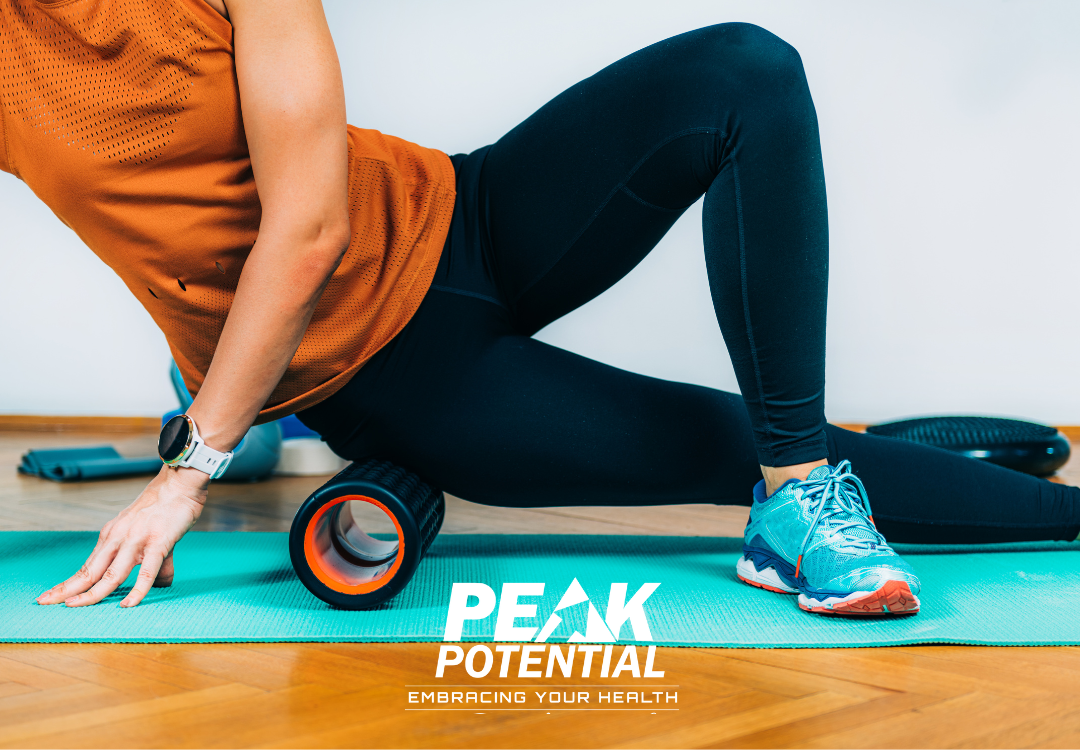You walk out of the gym with pride after completing a new or challenging workout, but find yourself barely able to walk the next day. It is not uncommon to feel strong today and then struggle with pain and stiffness a day or two later. However, it is possible to experience pain free fitness and we are here to teach you how to exercise without getting so sore.
First, let’s define what you are experiencing. These symptoms are called delayed onset muscle soreness (DOMS). The cause if frequently debated but our best research shows the discomfort comes from microtears in the muscle resulting in inflammation. This response by the body can cause decreased range of motion, muscle aches, joint stiffness, puffiness, and even pain (especially trying to go down stairs after leg day).
Knowing why this happens allows us to better prevent and treat the problem. There are simple steps you can take before, during, and after your workout to achieve pain free fitness.
What to Do Before Your Workout
- Drink Water. Staying hydrated before, during, and after your workout will decrease cramps and your risk for injury.
- Eat Protein. Amino acids from protein are the building blocks of muscle. By consuming foods high in protein you are giving your body what it needs to rebuild.
- Warm Up. Before your workout, perform some dynamic stretching to prevent those microtears from turning into greater damage. Cold tissues are more vulnerable to injury.
What to Do During Your Workout
- Correct Form. Consult with a personal trainer, work with a physical therapist, or watch trusted trainers online to be sure your form is accurate for each exercise.
- Pace Yourself. Overexertion leads to the greatest discomfort. The only way to improve your fitness is to challenge yourself, but be sure to add to your workout gradually.
- Static Stretching. End your workout with slow static stretches that expand your range of motion while your muscles are warm. It’s ideal to add some deep breathing.
What to Do After Your Workout
- Keep Moving. You might sit at a desk or be tempted to hit the couch the rest of the day, but this will just make DOMS symptoms worse. Take short walk breaks and consider use of a Thera gun or foam roller to decrease muscle tension and improve circulation.
- Replenish Electrolytes. Your body requires electrolytes, not just water, to keep tissues well hydrated and prevent cramping. Be sure your formula doesn’t include artificial ingredients and sugar that will add to inflammation (here is our favorite Rehydrate).
- Sleep Well. Stick to a consistent bedtime routine and aim for 7-9 hours of sleep each night. This is the time your body does it’s best repair work and sleep deprivation can actually make your muscles weaker.
What the Pros Do
- Contrast Showers. The pros will alternate between an ice bath and sauna, but similarly you can do contract showers alternating between moderately hot and cold water.
- Supplement Wisely. There are resources your body needs to heal and recover optimally and with less discomfort. This may include antioxidant support, omega 3 fish oil to decrease inflammation, or my favorite creatine monohydrate for muscle rebuilding and resilience.
- Increase Oxygen. Every cell of your body needs oxygen to heal. By delivering more to the area you can speed up the healing process and decrease pain. Professional athletes often utilize Hyperbaric Oxygen Therapy to reach peak performance (learn more about HBOT).
Try a few of these strategies and let us know how they work for you.
As always, it is important to distinguish between muscle soreness and injury that may require medical attention. If pain is sudden or severe while exercising, or if your symptoms last more than 3 days give your Doctor of Physical Therapy a call to have the problem evaluated (it’s easy to request a phone consult).
We are here to help you build muscle and stay fit without experiencing muscle pain. Listen to your body, respect it’s limits when necessary, and never hesitate to ask for help in order to lead an long and active life.
If you need a more personalized approach to recovery, or don’t know where to start on your fitness journey, Fitness & Nutrition Genetic Testing with our Integrative Health Coach is the ideal roadmap.

